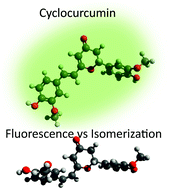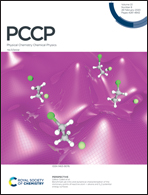Trans-to-cis photoisomerization of cyclocurcumin in different environments rationalized by computational photochemistry†
Abstract
Cyclocurcumin is a turmeric component that has attracted much less attention compared to the well-known curcumin. In spite of the less deep characterization of its properties, cyclocurcumin has shown promising anticancer effects when used in combination with curcumin. Especially, due to its peculiar molecular structure, cyclocurcumin can be regarded as an almost ideal photoswitch, whose capabilities can also be exploited for relevant biological applications. Here, by means of state-of-the-art computational methods for electronic excited-state calculations (TD-DFT, MS-CASPT2, and XMS-CASPT2), we analyze in detail the absorption and photoisomerization pathways leading from the more stable trans isomer to the cis one. The different molecular surroundings, taken into account by means of the electrostatic solvent effect and compared with available experimental data, have been found to be critical in describing the fate of irradiated cyclocurcumin: when in non-polar environments, an excited state barrier prevents photoisomerization and favours fluorescence, whereas in polar solvents, an almost barrierless path results in a striking decrease of fluorescence, opening the way toward a crossing region with the ground state and thus funneling the photoproduction of the cis isomer.



 Please wait while we load your content...
Please wait while we load your content...